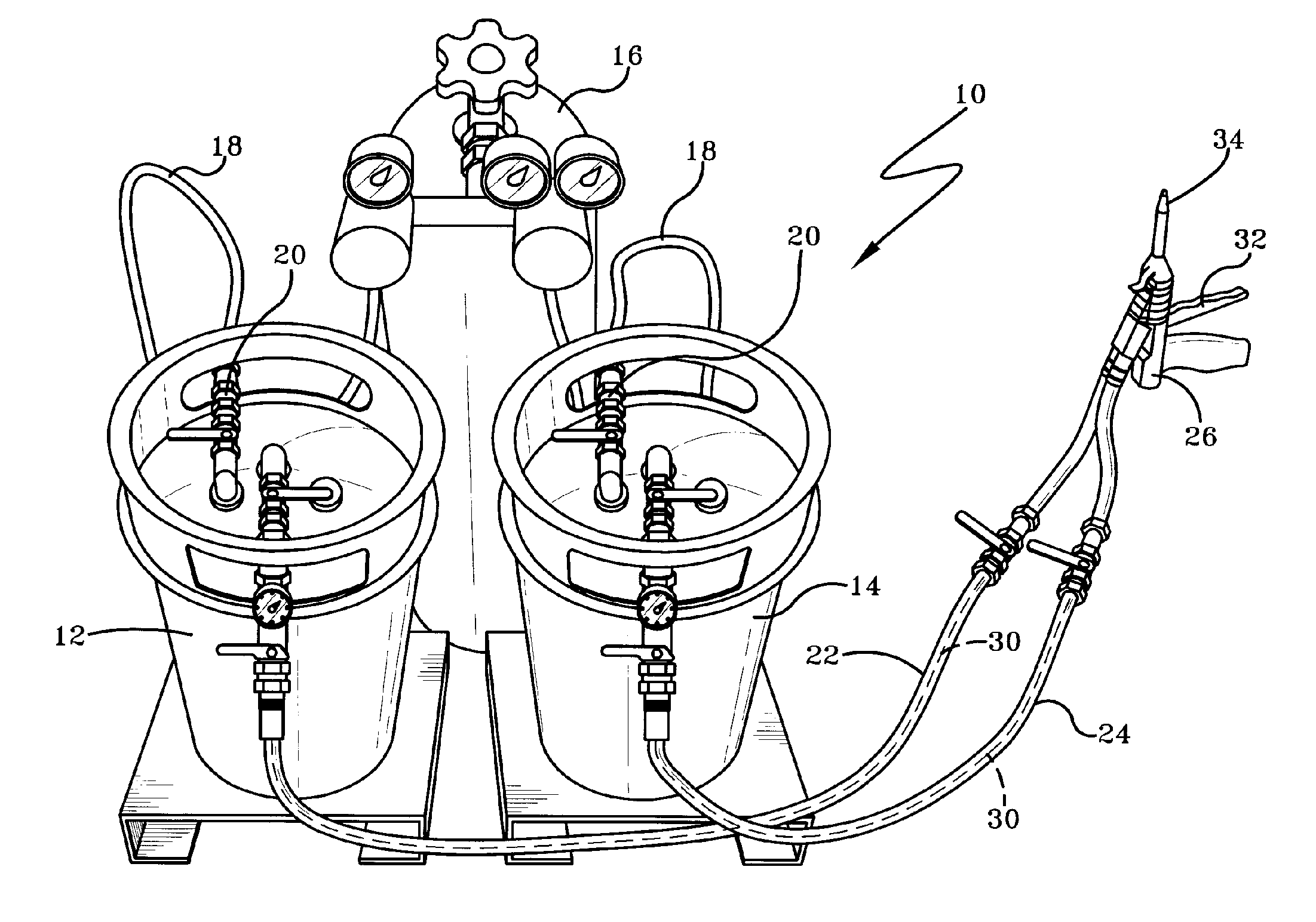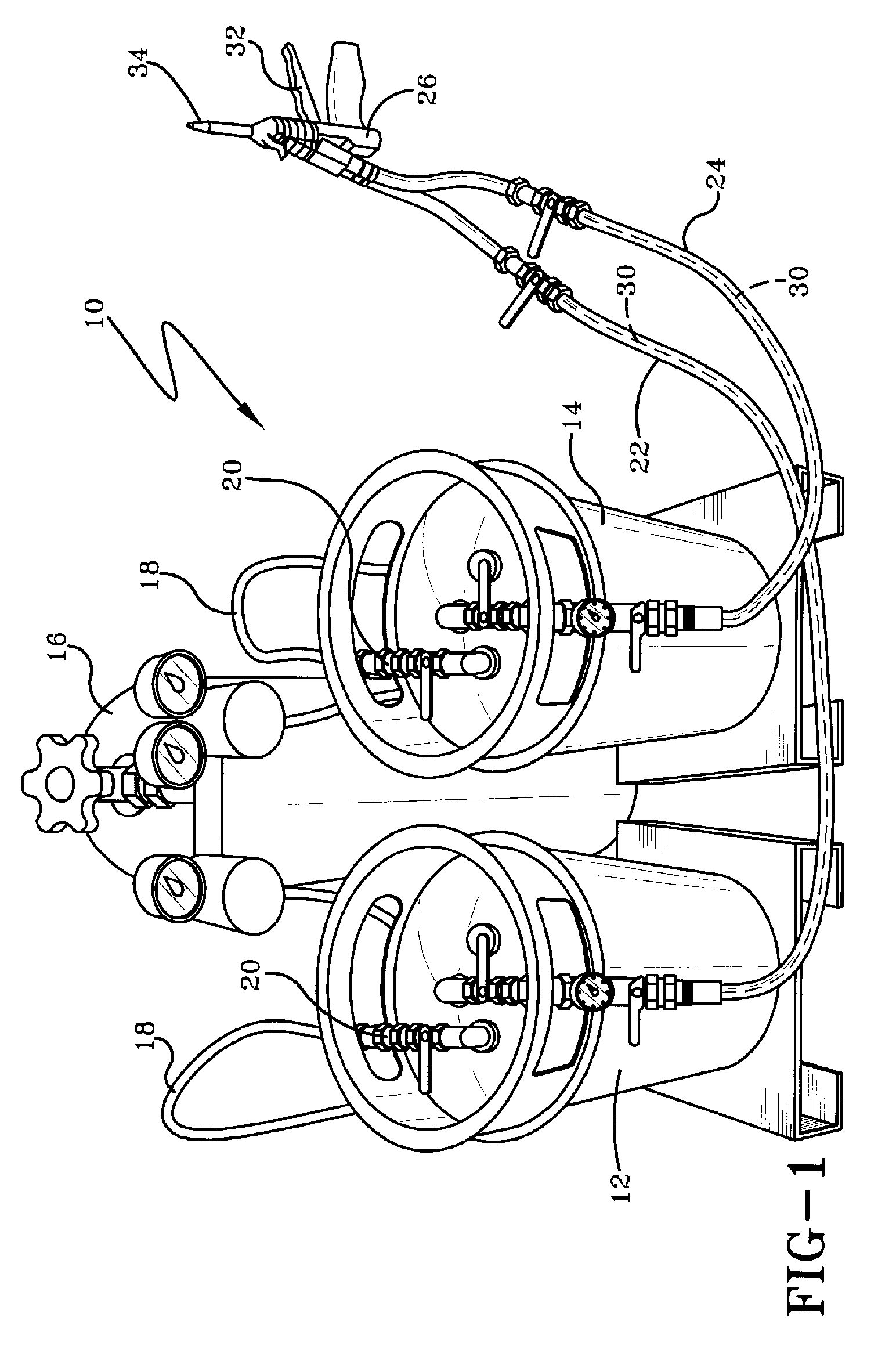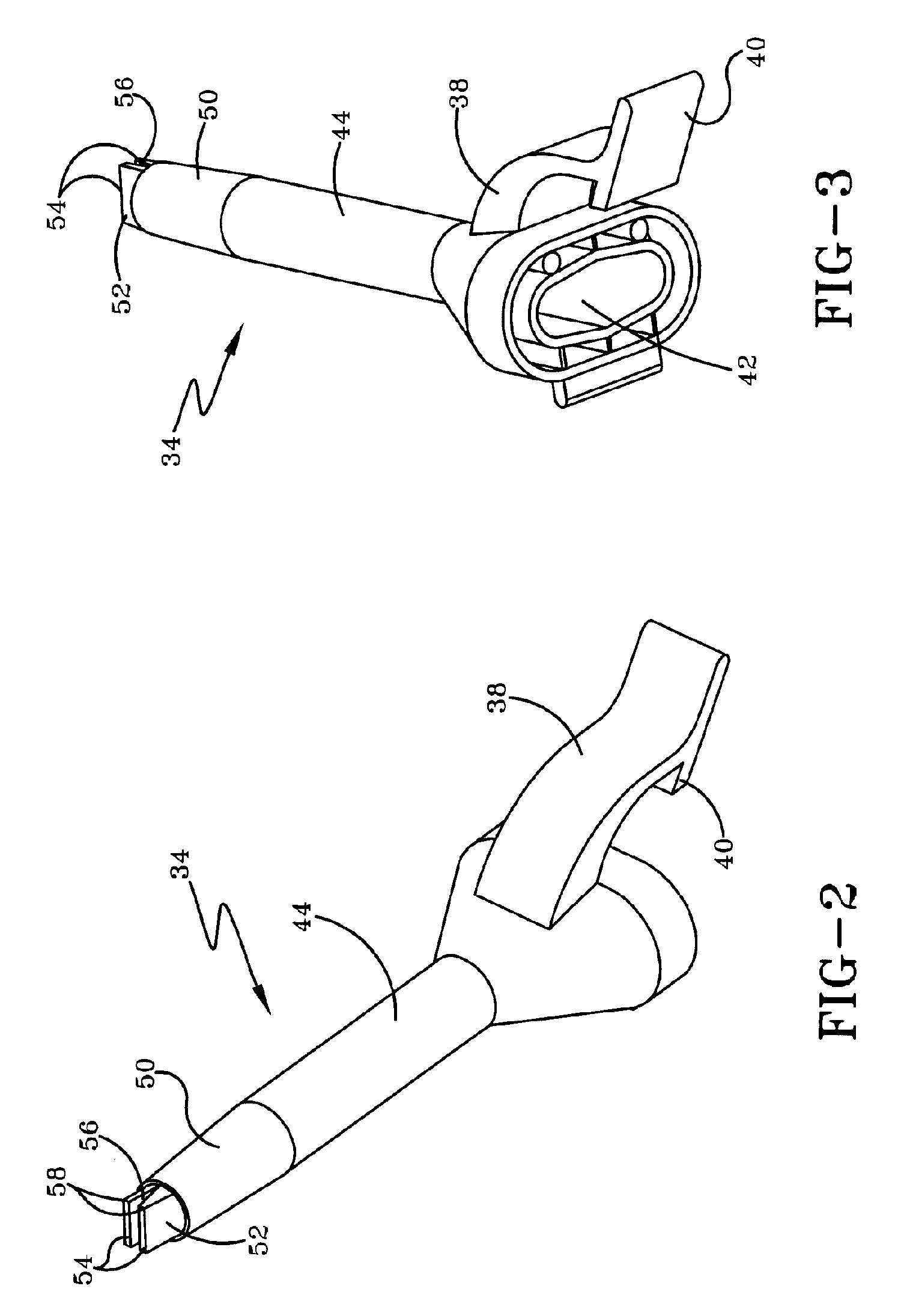Method for Rapid Insulation of Expanses
a technology of rapid insulation and expanses, which is applied in the direction of liquid transfer devices, combustion types, lighting and heating apparatus, etc., can solve the problems of air leakage, air leakage, and adhesion of foam to the surface of the foam
- Summary
- Abstract
- Description
- Claims
- Application Information
AI Technical Summary
Benefits of technology
Problems solved by technology
Method used
Image
Examples
Embodiment Construction
[0033] Referring now to the drawings wherein the showings are for purposes of illustrating the preferred embodiment of the invention only and not for purposes of limiting the same, the Figures show a preferred embodiment of the invention which provides for the rapid insulation of a desired surface using a two-component spray polyurethane froth foam system. Similar reference numbers refer to similar parts throughout the drawings.
[0034] A diagram of the equipment used in the invention described herein is shown in FIG. 1. Two tanks 12 and 14 separately store the chemical components (the “A” component and the “B” component) of the two-component polyurethane foam. The chemical storage tanks 12 and 14 are ideally the same size, as the chemicals within are combined at equal rates during use of the spray polyurethane foam insulation system 10. When the chemicals are not combined at equal rates, undesirable properties appear within the foam, such as incorrect consistency, incorrect color, u...
PUM
| Property | Measurement | Unit |
|---|---|---|
| pressure | aaaaa | aaaaa |
| angle | aaaaa | aaaaa |
| angle | aaaaa | aaaaa |
Abstract
Description
Claims
Application Information
 Login to View More
Login to View More - R&D
- Intellectual Property
- Life Sciences
- Materials
- Tech Scout
- Unparalleled Data Quality
- Higher Quality Content
- 60% Fewer Hallucinations
Browse by: Latest US Patents, China's latest patents, Technical Efficacy Thesaurus, Application Domain, Technology Topic, Popular Technical Reports.
© 2025 PatSnap. All rights reserved.Legal|Privacy policy|Modern Slavery Act Transparency Statement|Sitemap|About US| Contact US: help@patsnap.com



